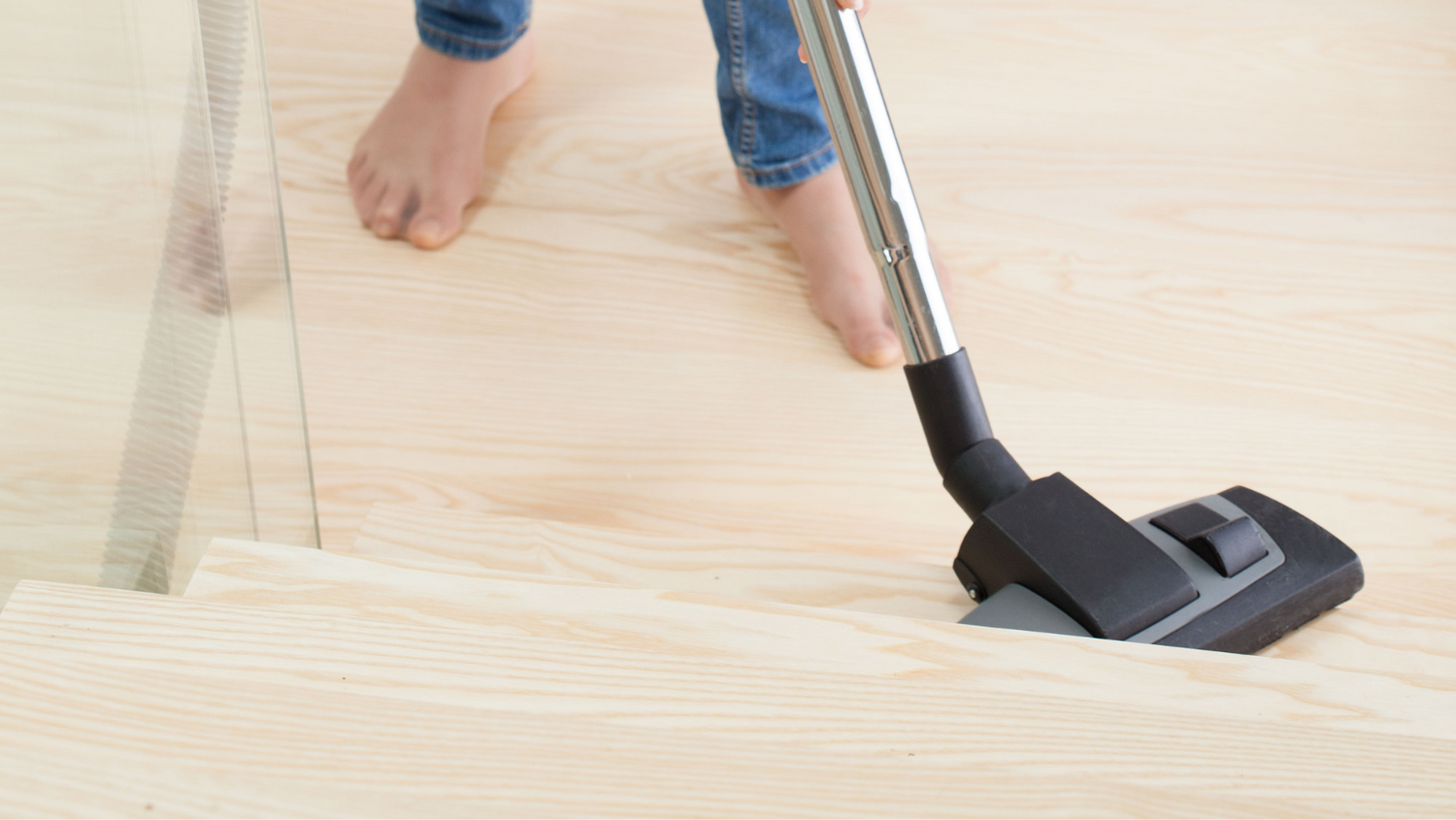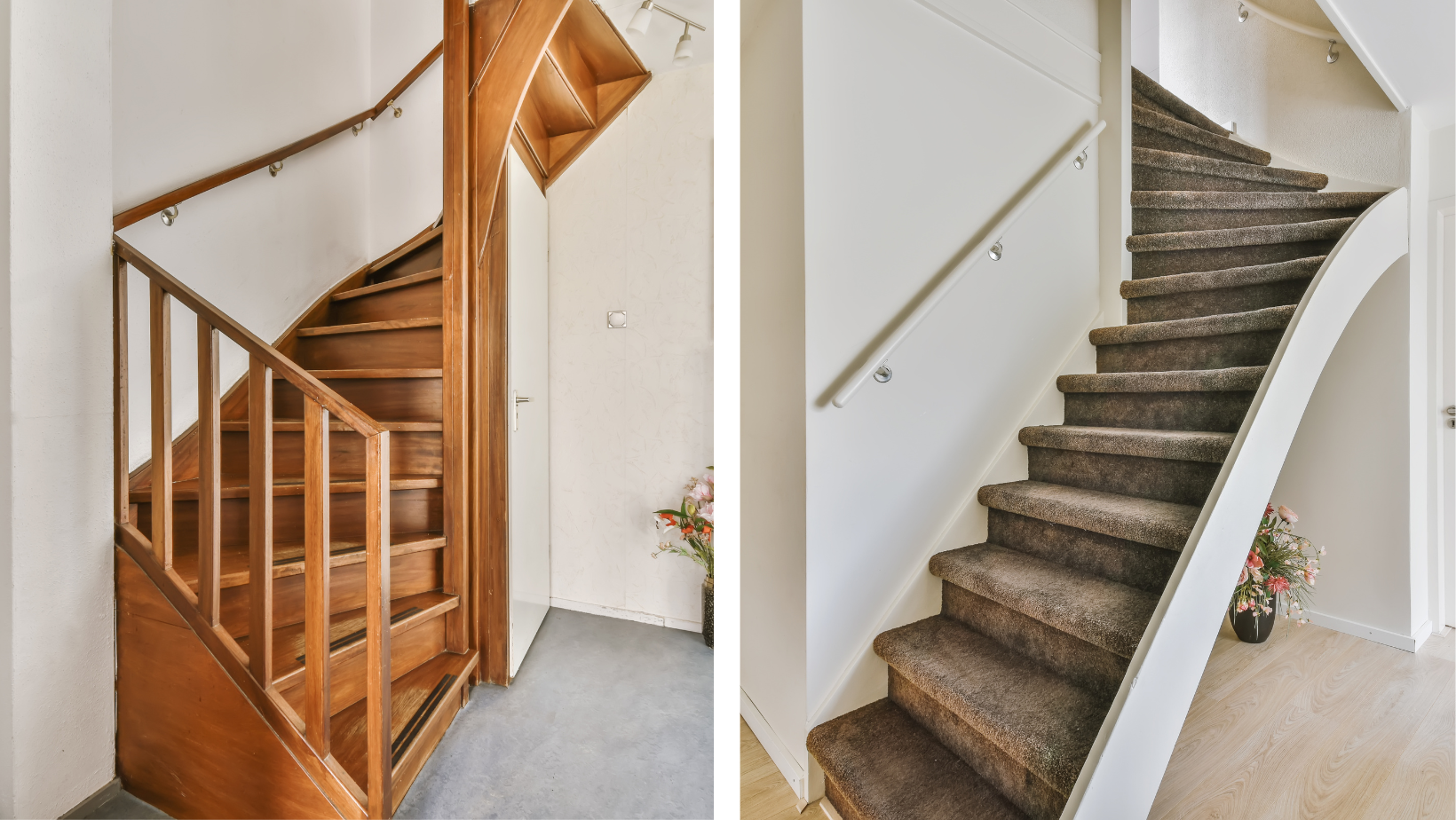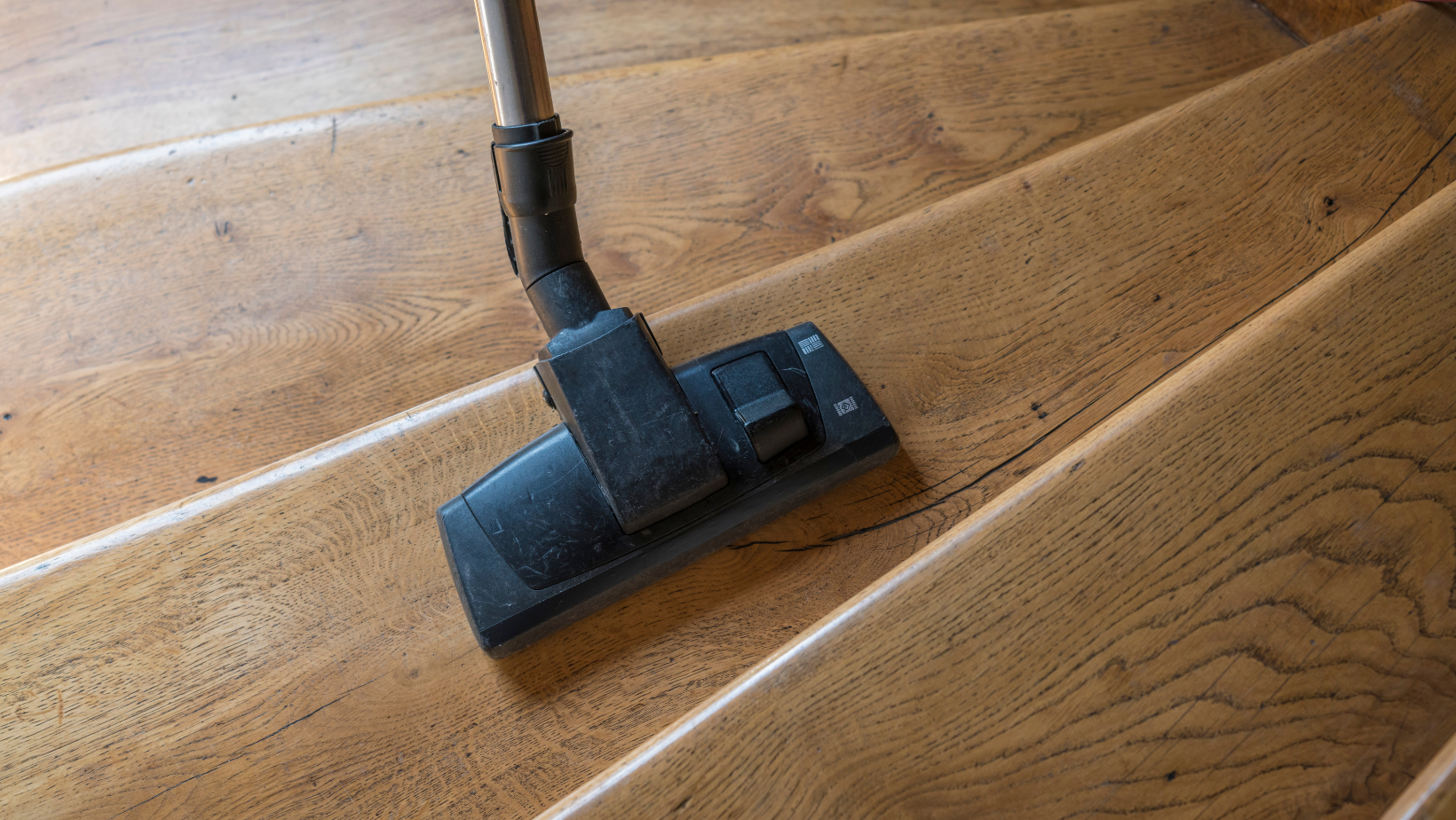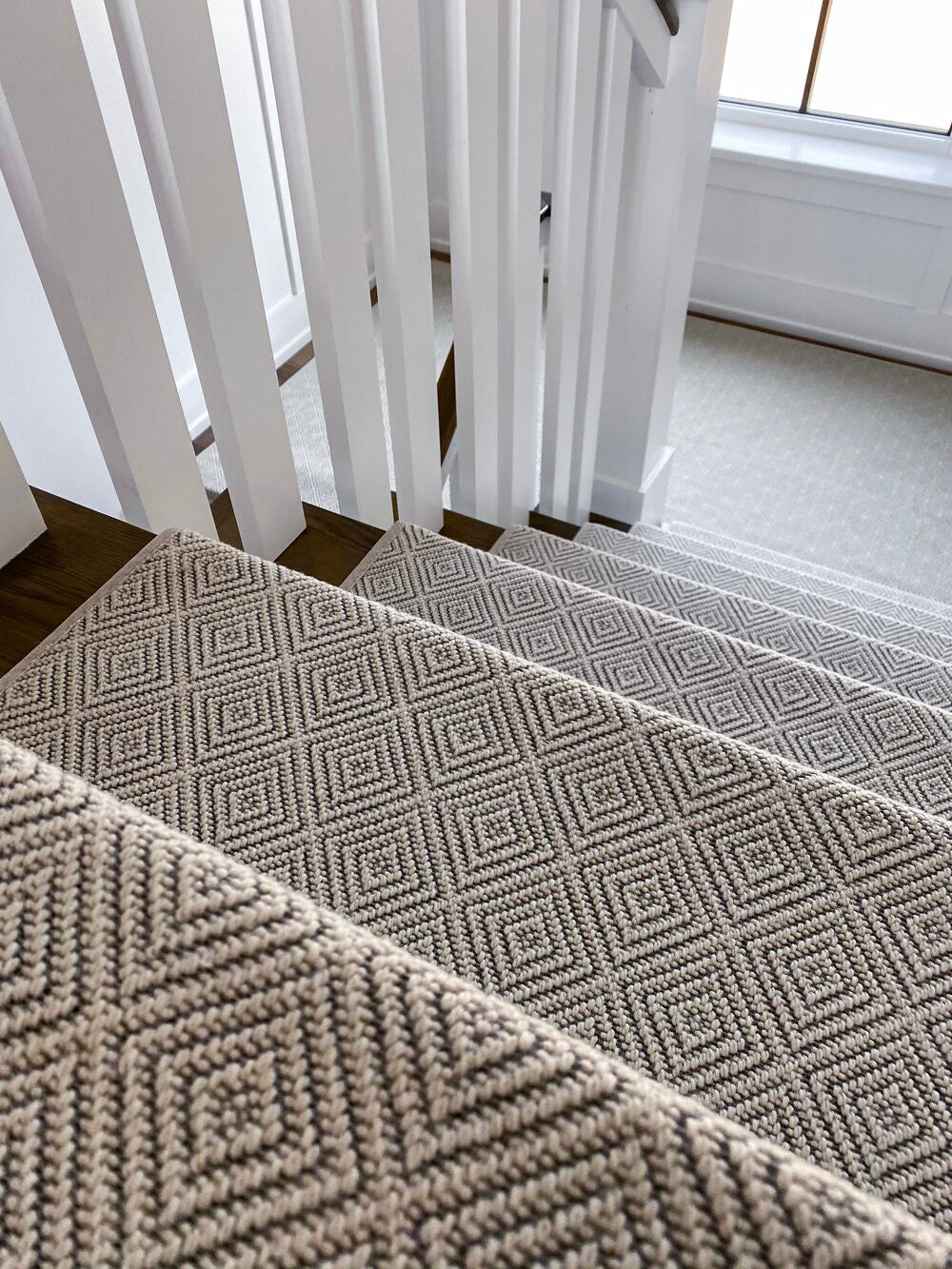Vacuuming stairs is one of the most overlooked cleaning tasks—but it’s also one of the most important for safety and cleanliness.
How do I vacuum my stairs?
Start at the top, use a lightweight vacuum with a crevice tool and brush attachment, and work your way down using steady back-and-forth motions.
In this guide, you'll learn step-by-step techniques to clean both wooden stairs and those with carpet stair treads, along with maintenance tips to protect your stair surfaces.
We’ll also help you choose the right tools and explain how to reach tricky areas like risers and corners.
Whether your goal is safety, cleanliness, or long-term care, these expert tips will help you do it right.
Choose the Right Vacuum for the Job
The right tool makes all the difference.
For stairs, choose a cordless stick vacuum or handheld vacuum with attachments.
These models are lightweight, easy to maneuver, and can handle both carpet and hardwood stairs.
Make sure your vacuum includes:
-
A crevice tool for edges and tight spots
-
A brush attachment for lifting dirt and pet hair
If you're wondering about the best vacuum for stairs, it comes down to ease of use, suction power, and versatility.
Cordless vacuums are a top choice for homeowners because they don’t require constant plugging and unplugging as you move from step to step.
Handheld vacuums work well too—especially for smaller staircases or touch-up cleaning.
Stick vacuums with flexible hoses and detachable heads are especially helpful for reaching under railings or into tight corners.
Start at the Top and Work Your Way Down
Always start from the top step and move downward.
This prevents dust and debris from falling onto freshly cleaned stairs.
Vacuuming in this order also keeps you safe.
You won’t step over freshly cleaned areas, and there’s less risk of missing spots along the way.
Use the Crevice Tool for Corners and Edges
Corners are where most dirt hides.
Use the crevice tool to reach into tight spaces where a regular vacuum head can’t go.
Clean along the edges of each step before vacuuming the tread itself.
This is especially important if you have pets—fur and dander tend to collect in these spots.
A quick pass with the crevice tool ensures your vacuuming efforts are thorough.
Vacuum Each Tread with a Back-and-Forth Motion
Once the corners are clean, switch to the brush tool or standard head.
Vacuum each step in a gentle back-and-forth motion.
Be thorough but avoid pressing too hard, especially on wood or delicate carpet stair treads.
This technique lifts embedded dirt and helps preserve the condition of both wood and carpet.
Don’t Skip the Risers
The risers (vertical parts between steps) collect dust too.
Run your vacuum or a handheld brush across them to keep the whole stairwell looking polished.
Neglecting the risers can lead to buildup over time, especially if you live in a home with a lot of foot traffic.
Tips for Cleaning Hard-to-Reach Areas
If your vacuum struggles with tight corners or deep spaces, use specialized attachments made for narrow areas.
Flexible extension hoses or smaller brush tools help you reach between railings, under overhangs, and into the crevice between the tread and riser.
This is also where dust tends to gather and settle—especially if your stairs are enclosed or rarely used.
How to Maintain Wooden Stairs
Wooden stairs need a gentle touch. Avoid harsh chemicals or anything abrasive.
-
Clean with a soft cloth and wood-safe cleaner
-
Protect by adding carpet stair treads or runners
-
Polish with a wood-safe wax to keep the shine
Adding treads isn’t just for looks—it’s for protection.
Many homeowners ask: do stair treads ruin wood? The answer is no. In fact, they do the opposite.
Carpet stair treads protect wooden stairs by creating a buffer between shoes, paws, and the wood beneath.
This prevents dents, scratches, and long-term wear.
To fix minor scratches or dents on wood stairs, use wood filler, sand lightly, and reapply a matching stain.
Protecting your stairs with treads helps minimize the need for frequent repairs.
How to Clean Carpet Stair Treads
Carpet stair treads offer safety, style, and protection—but they can collect dirt fast.
Here’s how to keep them fresh:
Vacuum Regularly
Vacuum at least once a week.
Use a brush attachment to loosen up trapped dirt and hair.
A cordless stick vacuum works great for quick cleaning.
Stick vacuums often come up as the best vacuum for stairs because they allow you to clean each step without bulky attachments or awkward cords.
Spot Clean Stains
Blot spills right away using a clean cloth and mild detergent.
Avoid rubbing—it spreads the stain.
For tougher spots, use a carpet stain remover and follow the product directions.
This step is especially important for homes with kids or pets, where messes are more frequent.
Deep Clean Occasionally
Every few months, do a deeper clean using a carpet cleaner or hire a professional.
This helps remove deep-set dirt, odors, and buildup that regular vacuuming can’t reach.
Deep cleaning also helps extend the life of your stair treads and keeps them looking like new.
Keep Your Stair Materials in Good Shape
Whether you have hardwood, laminate, or carpeted stairs, routine care is key to keeping them safe and stylish.
-
Sweep or vacuum regularly
-
Address spills immediately
-
Use protective runners or treads
-
Avoid dragging furniture or sharp items across steps
These simple habits go a long way in preserving the condition of your staircase.
How to Vacuum Different Stair Materials
Not all stairs are the same.
Each material requires slightly different vacuuming techniques to stay in good shape.
Carpeted Stairs
Use the brush head or motorized attachment to pull up dirt from the carpet fibers.
Don’t skip the edges—use your crevice tool every time.
Hardwood Stairs
Stick to a soft brush attachment to avoid scratching the wood.
Vacuum slowly, and follow up with a microfiber cloth if needed.
Painted or Stained Wood
Treat these stairs like hardwood, but avoid too much moisture.
Stick vacuums with gentle suction are ideal here.
Tread-Protected Stairs
If your stairs have carpet stair treads installed, vacuum the surface gently with a brush attachment.
Make sure the edges are also cleaned, and don’t forget the wood around the treads.
Adding treads doesn’t require any harsh adhesives.
Quality stair treads—like those made by Oak Valley Designs—come with peel-and-stick backing that won’t damage your wood, even over time.
Best Practices for Long-Term Stair Maintenance
Protecting your stairs goes beyond cleaning.
Here’s how to keep them safe and long-lasting:
Prevent Wear and Tear
Carpet stair treads don’t damage wood—in fact, they help protect it.
By adding a barrier between shoes and your stairs, you reduce scratches, dents, and general wear.
This is especially helpful in high-traffic areas or homes with pets.
And again, if you’ve wondered do stair treads ruin wood, the real answer is: they help extend its lifespan.
Regular Safety Checks
Inspect for loose treads, cracked wood, or worn adhesive.
Fixing issues early prevents slips and bigger repairs down the line.
Check handrails and surrounding trim while you’re at it—these often go ignored but play a major role in safety.
Add Stairs to Your Cleaning Routine
Don’t forget your stairs during weekly or monthly cleanups.
A consistent routine keeps them safe, clean, and in great shape.
Try pairing stair cleaning with your usual floor maintenance.
That way it becomes habit.
Choosing the Best Tools to Keep Stairs Clean
Your vacuum isn’t the only tool worth having.
Depending on your stair material and frequency of cleaning, you might also want:
-
A microfiber mop for quick dusting
-
A hand broom for dry sweeping wood
-
Stain remover spray for unexpected messes
-
Disinfecting wipes for sticky residue
Choosing the best vacuum for stairs often comes down to which add-ons come with the machine.
Look for models with a long battery life, flexible attachments, and strong suction—even on stairs with treads or tight corners.
When to Replace Your Carpet Stair Treads
Over time, even well-maintained treads will show signs of wear.
If the surface begins to fray, the adhesive weakens, or they lose their grip—it’s time to replace them.
High-quality stair treads should last several years with regular care. To extend their life:
-
Vacuum regularly
-
Avoid moisture
-
Don’t pull at edges or corners
Replacing treads is easy and only takes a few minutes—especially when they’re made with user-friendly, no-damage backing like Oak Valley Designs offers.
Stepping It Up
Knowing how to vacuum your stairs properly makes a huge difference in the look, feel, and safety of your home.
Whether you're dealing with wooden stairs, carpet stair treads, or both, the right tools and techniques help prevent damage, extend your stairs’ life, and keep everything clean.
When selecting the best vacuum for stairs, prioritize usability, weight, and accessories.
And remember—carpet stair treads don’t ruin wood.
They protect it.
They also add style, warmth, and safety to your stairway.
Contact Us Today!
If you’re ready to upgrade your stairs with handcrafted, pet-friendly, American-made treads, Oak Valley Designs is here to help.
Ready to transform your stairs with safety and style?
Get in touch today.
-
Website: https://oakvalleydesigns.com/
-
Phone: 706.331.0315
-
Email: info@oakvalleydesigns.com
-
Address: 30 River Ct SW Bldg E Cartersville, Ga 30120




